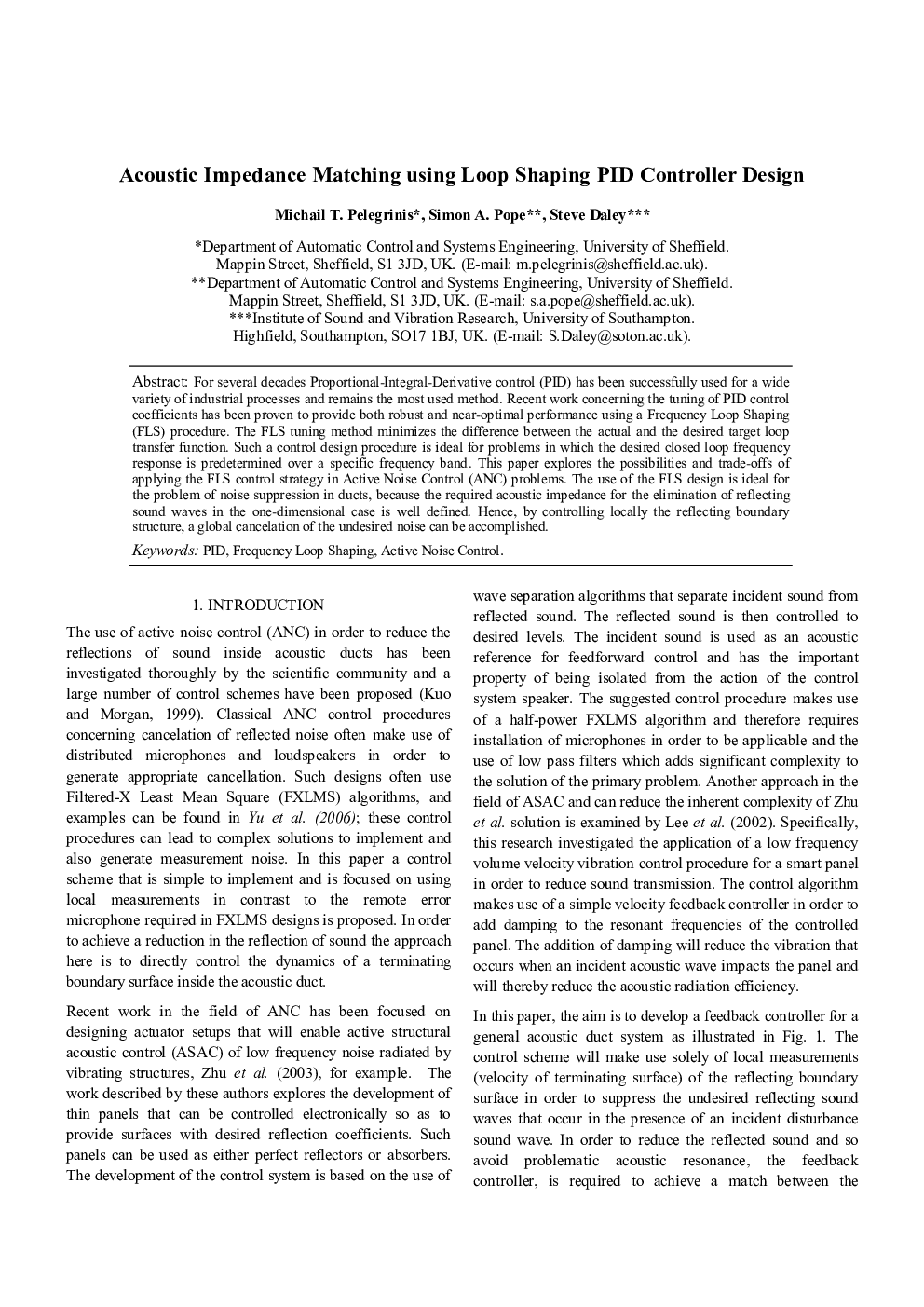| کد مقاله | کد نشریه | سال انتشار | مقاله انگلیسی | نسخه تمام متن |
|---|---|---|---|---|
| 717257 | 892236 | 2012 | 6 صفحه PDF | دانلود رایگان |

For several decades Proportional-Integral-Derivative control (PID) has been successfully used for a wide variety of industrial processes and remains the most used method. Recent work concerning the tuning of PID control coefficients has been proven to provide both robust and near-optimal performance using a Frequency Loop Shaping (FLS) procedure. The FLS tuning method minimizes the difference between the actual and the desired target loop transfer function. Such a control design procedure is ideal for problems in which the desired closed loop frequency response is predetermined over a specific frequency band. This paper explores the possibilities and trade-offs of applying the FLS control strategy in Active Noise Control (ANC) problems. The use of the FLS design is ideal for the problem of noise suppression in ducts, because the required acoustic impedance for the elimination of reflecting sound waves in the one-dimensional case is well defined. Hence, by controlling locally the reflecting boundary structure, a global cancelation of the undesired noise can be accomplished.
Journal: IFAC Proceedings Volumes - Volume 45, Issue 3, 2012, Pages 323-328